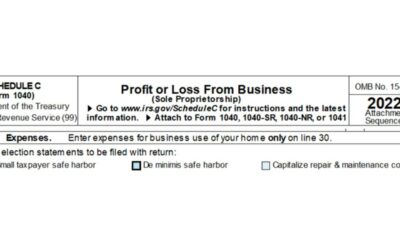Apply for Offer in Compromise
Now that you understand how to prepare youself and what options are available, let’s review how to present an Offer in Compromise. Remember, an Offer in Compromise is when you, the taxpayer, makes an offer to clear your debt for less than the total amount owed. There are basically two ways to calculate and to pay under this method if you assert that you qualify under “doubt as to collectability.”
The IRS does not approve Offers in Compromise easily. They will put your assets, liquidity, income, and debt under a microscope.
- Make sure your tax filings are current.
2. Not currently in a bankruptcy proceeding.
3. You have made all required estimated payments.
4. You have the resources to pay a partial amount of your IRS tax debt either in a lump sum or in fixed monthly payments.
5. Make a reasonable offer. The IRS will generally approve your offer when the amount truly resents the most they “can expect to collect within a reasonable period of time.”
If you meet the eligibility requirements for an Offer in Compromise, proceed to the application process. The application can be found at https://www.irs.gov/pub/irs-pdf/f656b.pdf. This is a time consuming project, but don’t get discouraged. Be sure to fill out all of the blanks. Pull all of your passwords together so you can easily access your accounts. You will need to know the value of all assets including equity in your house, cars, stocks, etc. Once all of the numbers are filled in, you’ll have access to a calculator to calculate the appropriate offer. Don’t fudge the numbers. Statements from banks, lenders, and retirement funds will have to be submitted as proof not eligible for abatement but many are.
What if my Offer is Rejected?
If your offer is rejected, there is still hope. You may file for an Appeal, or move on to one of two things: Installment Agreement or Temporarily Delay the Collection Process.
Applying for an Installment Agreement
Applying for an Installment Agreement is a bit easier because let’s face it, the IRS wants to collect as much of the money it’s owned as they can. If you owe the IRS less than $50,000 or are unemployed for longer than 30 days, you may even be eligible to have your IRS penalties waived under the Fresh Start Program. There are both short term and long term payments plans. Once you are on a plan, and sticking to it, further collection activities like asset seizure and wage garnishment are suspended. You may make payments through the IRS system each month or volunteer for direct debit. If you owe more than $25K, direct debit is required. If you have a lien against you, you should make payments via the direct debit option. This will allow you to apply for a Lien Withdrawal.
Temporarily Delay the Collection Process
If you find yourself in the situation where you want to rid yourself of your IRS debt, but just cannot, consider applying to delay the collection process. If the IRS agrees that you cannot repay, they will pause collection efforts. The debt does not go away, interest continues to compound, and the IRS still has the option to place a lien on your assets to protect their interests. This is not an ideal option, but it will prevent your assets from being seized.
Navigating the IRS is not easy. It can feel overwhelming during an already stressful situation. You do not have to take it on alone. Ask your bookkeeper or CPA if they can help. You may already have a relationship with someone that can assist you.
Tax Hostage is a tax resolution company offering compassionate, licensed tax help for your IRS or state tax problems. If you have found yourself in a challenging spot with the IRS, we are here to help.




